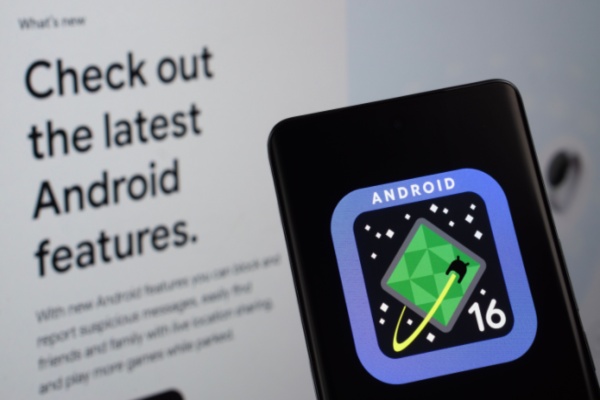 Google Ships Android 16 Early, and it has a Major Update
Google Ships Android 16 Early, and it has a Major Update
Google shipped Android 16 today, months ahead of the usual schedule, and the earliest in a year that it’s delivered a major update for its mobile operating system in almost 15 years.
As PCMag reports, the headline news with Android 16 isn’t a brand-new look like the “Liquid Glass” makeover Apple unveiled as part of iOS 26 at their WWDC on Monday. Google’s new Material 3 Expressive design vocabulary doesn’t seem nearly as big of a change; it’s more small tweaks at the margins.
What’s New and Cool about the Android 16 Update
They start at the top of a phone’s screen with changes to ease notification overload.
Android 16 will allow “compatible” ride-hail and food-delivery apps to display live updates on the lock screen so you don’t need to flip over to those apps or check their notifications every few minutes. It will also begin “force-grouping notifications that come from a single app.”
Another change addresses a much uglier aspect of digital life: attacks on your device by well-resourced adversaries. Android 16 adds an Advanced Protection that, like Apple’s Lockdown Mode, raises your device’s shields across a variety of systems and apps. You can turn this on and off as needed; for example, before and after a border checkpoint.
Google calls out a third major feature intended for the ears of Android users: better support for Bluetooth-linked hearing aids, in the form of system-level controls for their audio that allow a hearing aid to use the phone’s own microphone for clearer audio input.
A developer blog post outlines changes that may not show up on Android devices right away because they require implementation work from app developers, such as added photo and video controls, support for adaptive app interfaces that automatically fill out the larger screens of foldables and tablets, new system animations for switching between apps, and accessibility improvements to make onscreen text more legible.
That post also covers a range of security upgrades that cover scenarios like redirection attacks by malicious apps that got past Google’s Play Protect screening, protecting location privacy when connecting to Bluetooth devices, and an app’s request for access to your photos library.
Which Phones Get Android 16 First?
Google’s Android developers account teased the release in a post on X Monday night, but PCMag has known that the company was adopting an accelerated release schedule for Android 16 since November, when it dropped the first developer preview. That was three months earlier than the first dev preview for Android 15; full releases have largely happened in the fall.
Google says it adopted this schedule “to better align with the schedule of device launches across our ecosystem, so more devices can get the major release of Android sooner.”
As with earlier releases, Google’s own Pixel devices should get Android 16 first, with the 2021-vintage Pixel 6 the oldest phone supported. People with other companies’ devices will have to wait, depending on how many changes the vendor in question makes to the stock Android configuration and what kind of priority they place on shipping new Android updates.
—
Photo Credit: Bangla press / Shutterstock.com


